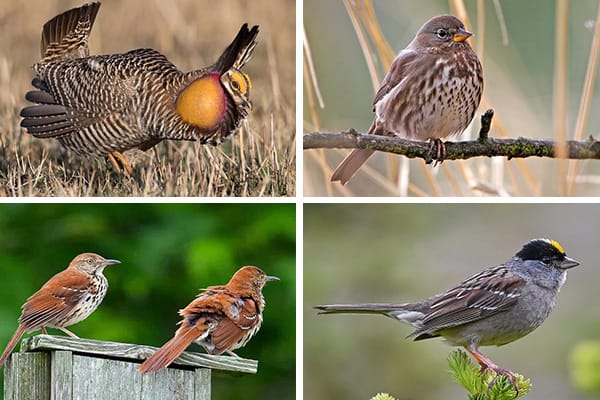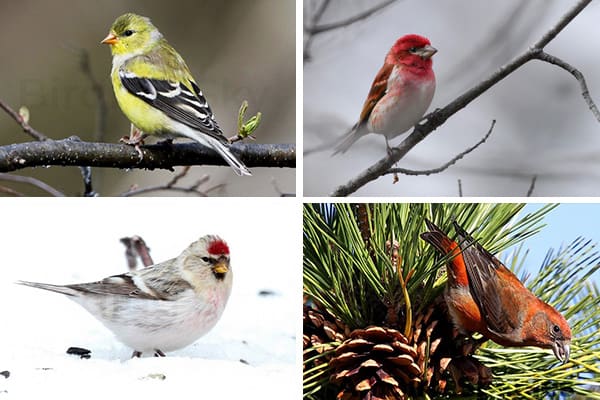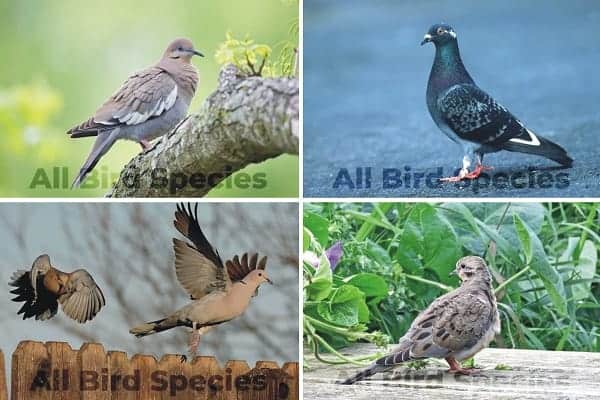Brown Birds In Michigan (12 Large and Small Species)
Michigan is home to a diverse range of wildlife, including many bird species Among them, brown birds often go unnoticed, blending into their surroundings. However, these birds are fascinating and play vital roles in their ecosystems. From the cheerful American Robin to the elusive Swainson’s Warbler, Michigan’s brown birds contribute to the rich tapestry of its avian life. In this article, we will explore several brown birds found in Michigan, discussing their characteristics, habitats, and diets.
1. American Robin (Turdus migratorius)
- Size: 9-11 inches (23-28 cm)
- Weight: 2.7-3.2 ounces (77-91 grams)
- Lifespan: 2-6 years in the wild
- Diet: Insects, fruits, and berries

The American Robin is a familiar sight in Michigan, especially during spring and summer. With its bright orange-red breast and cheerful song, this bird is often regarded as a symbol of the arrival of warmer weather. American Robins are known for their distinctive hopping behavior as they search for worms and insects in grassy areas.
These brown birds of michigan are highly adaptable and can be found in various habitats, including gardens, parks, and forests. They primarily feed on insects, fruits, and berries, making them important for seed dispersal. Their melodic song adds a lovely soundtrack to Michigan’s landscapes, making them a favorite among birdwatchers and nature lovers.
2. Eastern Towhee (Pipilo erythrophthalmus)
- Size: 6.5-8.5 inches (16-22 cm)
- Weight: 1.5-2.0 ounces (42-56 grams)
- Lifespan: 3-5 years in the wild
- Diet: Seeds, insects, and berries
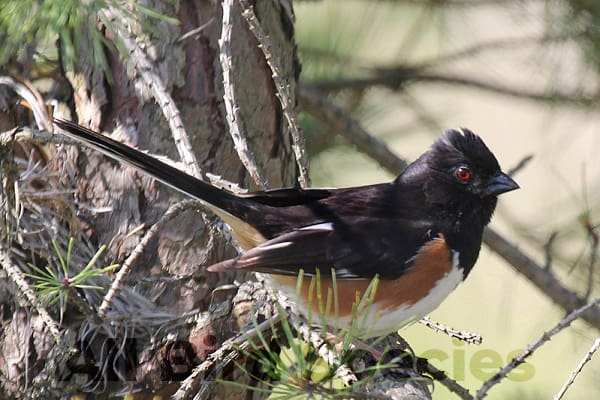
The Eastern Towhee is a striking bird known for its bold colors and distinctive call. Males are characterized by their black upperparts and bright orange-brown sides, while females have a more subdued coloration. These birds are often found in shrubby areas and brushy habitats, where they can forage for food.
Eastern Towhees have a unique foraging behavior known as “double-scratching,” where they scratch the ground with both feet to uncover seeds and insects. Their diet primarily consists of seeds, insects, and berries. Their sharp, clear call of “drink-your-tea” makes them easy to identify, adding a lively presence to their habitats.
3. Brown Thrasher (Toxostoma rufum)
- Size: 9.5-11 inches (24-28 cm)
- Weight: 2.7-4.2 ounces (76-119 grams)
- Lifespan: 3-4 years in the wild
- Diet: Insects, fruits, and seeds

The Brown Thrasher is a beautiful bird with a long, curved tail and striking brown streaks on its chest. Known for its impressive vocal abilities, this bird can mimic the songs of other species, making it one of the most talented singers in North America. Brown Thrashers prefer habitats with dense vegetation, such as thickets and brushy areas, where they can forage for food.
These brown birds in michigan primarily feed on insects, fruits, and seeds. Their foraging technique involves scratching through leaf litter to uncover hidden food. With their rich, varied songs and striking appearance, Brown Thrashers are a delight to observe in Michigan’s woodlands.
4. Greater Prairie Chicken (Tympanuchus cupido)
- Size: 16-20 inches (41-51 cm)
- Weight: 2-3.5 pounds (0.9-1.6 kg)
- Lifespan: 2-5 years in the wild
- Diet: Grasses, seeds, and insects
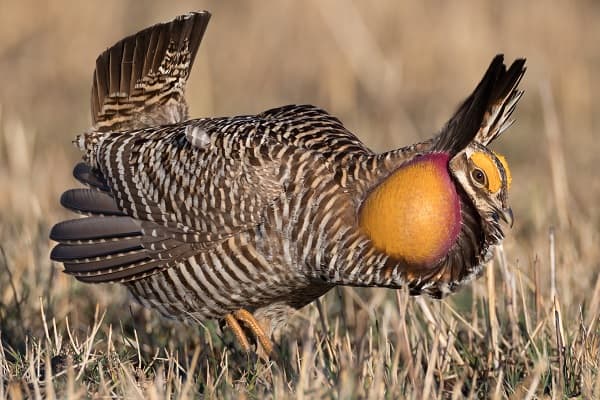
The Greater Prairie Chicken is a unique bird that once roamed the vast grasslands of Michigan. Known for its distinctive booming calls during courtship displays, this bird has a beautiful, mottled brown plumage that provides excellent camouflage in its grassland habitat. Although their numbers have declined, efforts are being made to conserve their populations.
These birds primarily feed on grasses, seeds, and insects. Their unique mating rituals, where males gather in leks to display and compete for females, are a fascinating sight in the spring. The Greater Prairie Chicken is an important part of Michigan’s natural heritage and a symbol of the state’s grassland ecosystems.
5. House Finch (Haemorhous mexicanus)
- Size: 5.5-6.5 inches (14-17 cm)
- Weight: 0.9-1.4 ounces (25-40 grams)
- Lifespan: 3-5 years in the wild
- Diet: Seeds, fruits, and flowers

The House Finch is a common bird found in urban and suburban areas across Michigan. With its short, conical bill and brown-streaked plumage, this bird is well-adapted to city life. Male House Finches are known for their bright red or orange plumage on the head and chest, while females are brown and streaked, providing excellent camouflage.
House Finches primarily feed on seeds, fruits, and flowers. These michigan brown birds are often seen foraging at bird feeders or in gardens, making them a familiar sight for many homeowners. Their cheerful songs and adaptability to urban environments make them popular bird among city dwellers.
6. Mourning Dove (Zenaida macroura)
- Size: 9-13 inches (23-33 cm)
- Weight: 4.0-6.0 ounces (113-170 grams)
- Lifespan: 1-3 years in the wild (up to 10 years in captivity)
- Diet: Seeds and grains

The Mourning Dove is a graceful and slender bird known for its soft, mournful cooing. With its light brown and gray plumage, this bird blends well into its surroundings, making it a common sight in both rural and urban areas of Michigan. Mourning Doves are often seen perched on telephone wires or foraging on the ground.
These birds primarily feed on seeds and grains, making them a common visitor to bird feeders and open fields. Their gentle cooing adds a peaceful ambiance to Michigan’s landscapes, and their graceful flight is a joy to watch. Mourning Doves are often associated with love and harmony, making them a beloved bird among many.
7. Gray-crowned Rosy Finch (Leucosticte tephrocotis)
- Size: 6-7 inches (15-18 cm)
- Weight: 0.9-1.3 ounces (25-37 grams)
- Lifespan: 3-5 years in the wild
- Diet: Seeds, insects, and berries
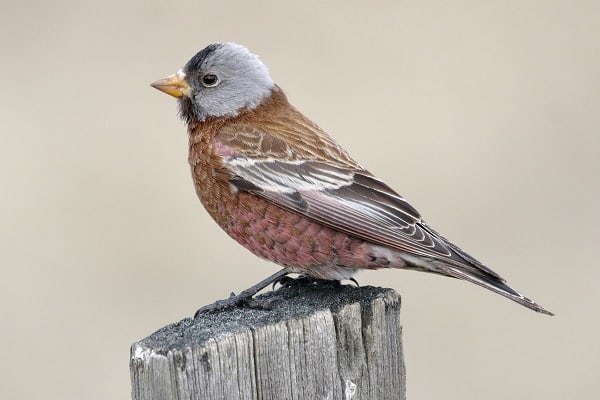
The Gray-crowned Rosy Finch is a beautiful bird found in mountainous regions, particularly during the winter months. With its striking gray crown and rosy underparts, this bird is a stunning sight against the snowy backdrop of Michigan’s higher altitudes. They are often seen in flocks, foraging for food in open areas.
These finches primarily feed on seeds, insects, and berries, making them omnivorous. Their preference for high elevations and open habitats means they are often spotted in more remote areas of Michigan. The Gray-crowned Rosy-Finch is a delightful bird to observe, especially during winter when they brighten up the cold landscape.
8. Bachman’s Sparrow (Peucaea aestivalis)
- Size: 5.5-6.5 inches (14-17 cm)
- Weight: 1.0-1.5 ounces (28-42 grams)
- Lifespan: 3-5 years in the wild
- Diet: Seeds, insects, and berries

Bachman’s Sparrow is a secretive bird that prefers dense, shrubby areas for nesting. Its brown and gray plumage provides excellent camouflage, allowing it to blend into its surroundings. This sparrow is known for its beautiful song, which is often heard before the bird is seen.
These sparrows primarily feed on seeds and insects, foraging on the ground and in low vegetation. Their preference for young pine forests and open woodlands makes them a less common sight in Michigan, but their melodic song is a treat for those lucky enough to encounter them.
9. Swainson’s Warbler (Limnothlypis swainsonii)
- Size: 5.5-6.5 inches (14-17 cm)
- Weight: 0.4-0.6 ounces (11-17 grams)
- Lifespan: 3-5 years in the wild
- Diet: Insects and small invertebrates
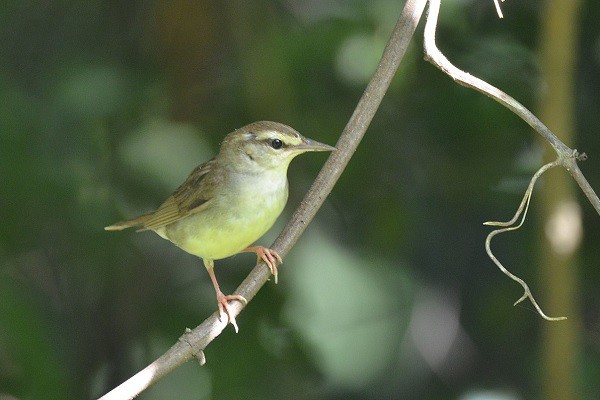
The Swainson’s Warbler is a shy and elusive bird often found in dense thickets and swamps. With its brown and streaked plumage, this bird is well-camouflaged in its preferred habitat. Despite its secretive nature, the Swainson’s Warbler is known for its beautiful, flute-like song that can be heard during the breeding season.
These brown birds of Michigan primarily feed on insects and small invertebrates, foraging in the leaf litter and low vegetation. Their preference for dense cover and wet habitats makes them a challenging bird to spot, but their enchanting song is a reward for those who listen carefully.
10. Golden-crowned Sparrow (Zonotrichia atricapilla)
- Size: 6-7 inches (15-18 cm)
- Weight: 0.6-1.0 ounces (17-28 grams)
- Lifespan: 3-5 years in the wild
- Diet: Seeds, buds, and berries
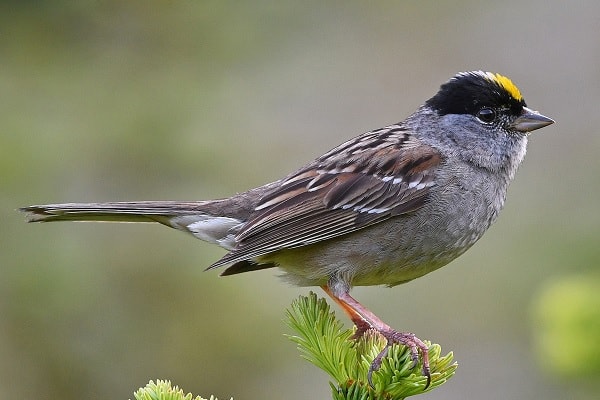
The Golden-crowned Sparrow is a striking bird with a distinctive yellow crown on its head. While they are more commonly found in the western United States, they can occasionally be spotted in Michigan during migration. Their brown and gray plumage helps them blend into their surroundings, while the bright yellow crown adds a splash of color.
These sparrows primarily feed on seeds, buds, and berries. They are often seen foraging on the ground in weedy fields or shrubby areas. The Golden-crowned Sparrow’s cheerful song and unique appearance make it a lovely addition to Michigan’s avian population during migration.
11. Bewick’s Wren (Thryomanes bewickii)
- Size: 4.5-5.5 inches (11-14 cm)
- Weight: 0.4-0.6 ounces (11-17 grams)
- Lifespan: 2-3 years in the wild
- Diet: Insects and seeds
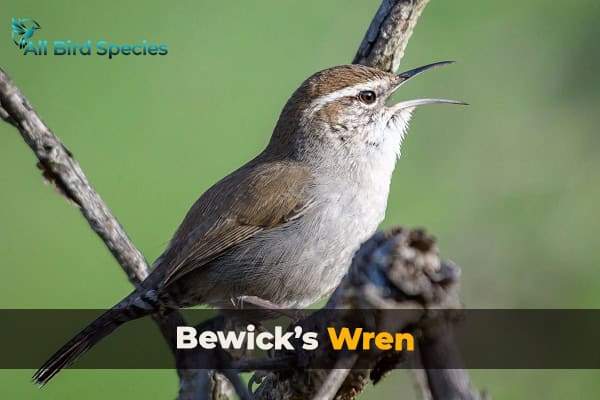
The Bewick’s Wren is a small, energetic bird known for its lively personality and distinctive call. With its brown upperparts and white underparts, this wren is a charming sight in gardens and woodlands. Their cheerful and varied songs make them a favorite among birdwatchers.
These wrens primarily feed on insects and seeds, foraging actively in shrubs and low vegetation. Their curious nature often leads them to explore their surroundings, making them fun to observe. Bewick’s Wrens are a delightful reminder of the diversity of birdlife in Michigan.
12. Buff-breasted Sandpiper (Calidris subruficollis)
- Size: 7-8 inches (18-20 cm)
- Weight: 2-3 ounces (57-85 grams)
- Lifespan: 5-10 years in the wild
- Diet: Insects and other invertebrates
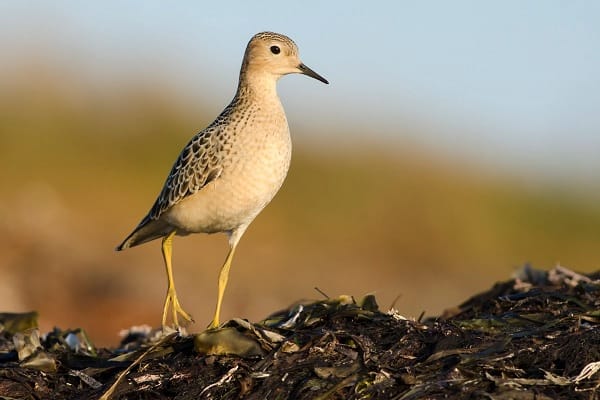
The Buff-breasted Sandpiper is a small shorebird known for its distinctive plumage and unique behavior. During the breeding season, males exhibit beautiful buff-colored plumage on their chests, making them stand out against the landscape. This sandpiper is often found in open grasslands and fields, particularly during migration.
These birds primarily feed on insects and other invertebrates, foraging on the ground. Their preference for open habitats and their migratory behavior make them a fascinating sight for birdwatchers. Buff-breasted Sandpipers are a reminder of the incredible diversity of birdlife that can be found in Michigan during migration.
Conclusion
Michigan’s brown birds may not always steal the spotlight, but they are a vital part of the state’s ecosystems. From the cheerful American Robin to the elusive Swainson’s Warbler, each species contributes to the rich tapestry of avian life. By appreciating these often-overlooked birds, we can deepen our understanding of Michigan’s natural heritage and the importance of conserving their habitats.
Whether you’re exploring a local park, hiking through woodlands, or simply enjoying your backyard, keep an eye out for these remarkable birds. Their unique behaviors and beautiful songs are sure to enhance your experience in Michigan’s diverse landscapes.
Read Our Previous Articles🐦
| Blue Birds in Michigan |
| Yellow Birds in Colorado |
| Blue Bird With A Red or Orange Chest |
| 6 Bird Beak Types and How Birds Use Them to Eat |
| Birds with Long Beaks |
Frequently Asked Questions
Q1: What are the little brown birds in Michigan?
Common little brown birds include sparrows, wrens, and female cardinals.
Q2: What kind of bird is brown?
Many birds can be brown, including sparrows, finches, and thrushes.
Q3: What is the most common bird in Michigan?
The American Robin is often considered the most common bird in Michigan.
Q4: Are brown thrashers common in Michigan?
Brown Thrashers are present in Michigan but are less common than other species.
Q5: What is the rare bird in Michigan?
The Kirtland’s Warbler is one of the rarest birds in Michigan.
Q6: What do you call a small brown bird?
Small brown birds are often referred to as “LBJs,” or “Little Brown Jobs.”
Q7: What is the 7 Coloured bird?
The “7 Coloured Bird” commonly refers to the Rainbow Bee-eater, known for its vibrant plumage.

